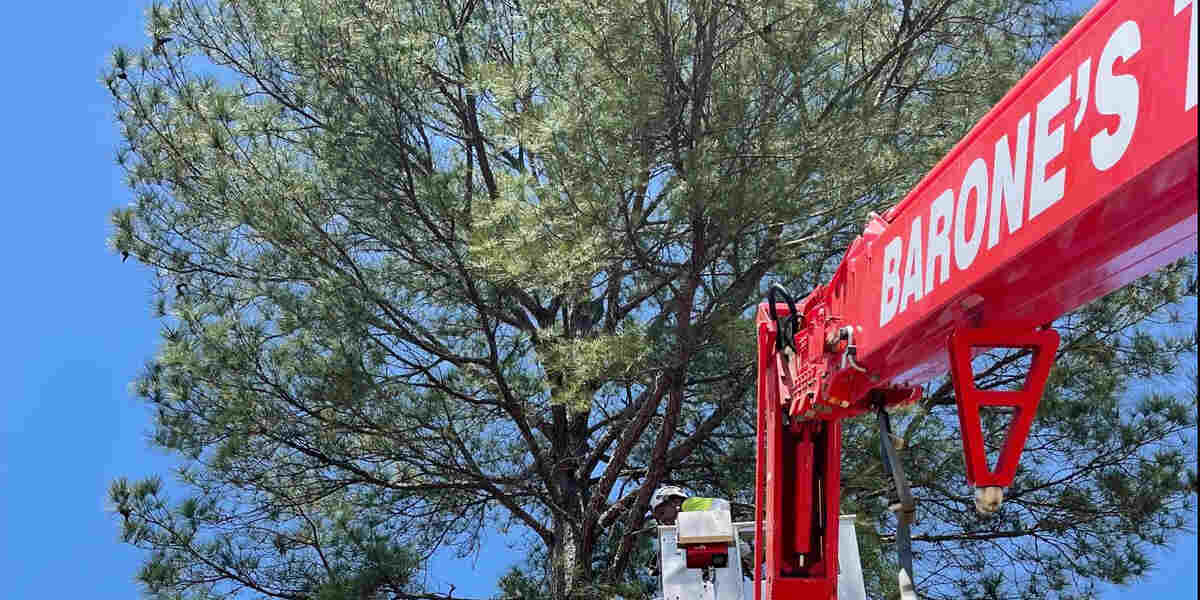When you have trees on your property, you have a responsibility to keep them healthy and looking their best. Part of that responsibility involves understanding the symptoms of disease and knowing when to seek tree disease treatment.
Keep reading to see which tree diseases and pest infestations to watch out for and their effective treatments, as advised by Brandon’s reliable tree service.

Oak Wilt
If you have oak trees in your yard, especially live or red oaks, watch out for this fungal disease. Introduced and spread by sap-feeding beetles, afflicted trees typically exhibit symptoms of wilting. Infected leaves turn brown and drop, and in severe cases, the trees die.
Oak wilt spreads fast, so it helps to seek immediate professional help. Applying systemic fungicides may help with prevention.
Cedar-Hawthorn Rust
This fungal rust disease requires two hosts to complete its life cycle. In addition to affecting hawthorns, apples, and junipers, cedar-hawthorn rust sometimes infects pears and quince. The most common symptoms include bright yellow spots on the leaves of the infected tree.
Heavy infections cause leaf dropping and reddish-brown galls on twigs. The disease spreads to nearby trees by wind.
A good sanitation method involves removing infected twigs. Some fungicide treatments may also help with prevention.
Fire Blight
Fire blight is a common bacterial disease with a destructive reputation. The disease can destroy limbs and even entire shrubs of fruit trees, from apples and pears to quince and mountain ash trees. Severe fire blight causes premature tree death.
Symptoms include bent shoot tips or blackening leaves, flowers, and branches. Schedule professional trimming at the first sign of trouble. Applying fungicides on the buds before they open will also kill off bacteria.
Dutch Elm Disease
Dutch elm disease is a fatal disease that can affect all elm species, with cedar elms being the most vulnerable. The disease is caused by a fungal pathogen, usually after an elm bark beetle insect infestation.
Watch out for yellow or withered leaves, starting from the top and moving downwards. Unfortunately, no effective tree disease treatment exists for Dutch elm disease. By the time you notice the symptoms of Dutch elm, the infected tree is usually beyond saving and needs professional removal.
However, if caught early, you can protect the tree from infection using fungicides or pruning out infections. Hire an expert to avoid inappropriate pruning.
An Integrated Approach
Besides chemical controls using bactericides, fungicides, and alternative products, consider integrating the following best practices into their tree care management plan:
- Crop rotation
- Proper sanitation of tools and equipment
- Supplying sufficient water
- Planting disease-resistant tree species
- Reduction of plant stressors
- Regular tree health checkups
Call Your Local Tree Experts
When you need professional tree care experts, Barone’s Tree Pros gathers the best talent in and around Brandon, MS. We have won over 15 awards for providing top-notch tree care services, including:
- Tree removal
- Stump grinding
- Tree pruning
- Debris cleanup
Call us today at (601) 345-8090 for expert advice on tree disease treatment and enjoy professional tree care benefits.